Currency
Senior U.S. law-enforcement and regulatory officials said they see benefits in digital forms of money and are making progress in tackling its risks. The price of bitcoin, the most common virtual currency, soared to a record following the comments.
U.S. authorities, appearing Monday at the first-ever congressional hearing on virtual currencies, outlined the pitfalls and promises of bitcoin amid concern the anonymity and decentralized nature of some virtual currencies can help facilitate crimes. The hearing provided a financial lift to bitcoin as U.S. officials, who have previously highlighted the currency’s role in money laundering and other illicit activities, called it a “legitimate” financial service.

WASHINGTON: Call it a speculative bubble or the rise of a currency of the future: the bitcoin jumped in value Tuesday after US authorities appeared to give the virtual money their blessing.
The electronic currency that is suspected of being used for illicit transactions on the Internet reached a value of $900 for the first time on specialized currency exchange websites.
But it is highly volatile, and a few hours later it was down to $700, according to Mt GOX, which manages trad ..
….read more HERE

Almost all the indicators of a toppy market haven’t presented themselves, writes a Charles Schwab pro.
One of my themes over the past few years is that the bull market that began in 2009 is of the “secular,” not “cyclical” variety. There are an increasing number of adherents to that perspective and it could help to explain, ironically, why there is also an elevated fear that this bull market is coming to a close. I say ironically because it’s precisely the increased optimism that has brought on fears of a bull market finale. I, too, consistently observe sentiment as a gauge for market behavior, but the growing cries that we’ve reached sentiment or valuation extreme worthy of past tops, or a bubble at its bursting point, seems a bit premature; even with the Dow hitting 16,000 and the S&P 500 hitting 1800 as I write this today.
It’s instructive to observe past market tops and put them on the opposite side of today’s mirror. What you won’t find is a reflection. Our friends at Strategas Research Partners recently put together a brief table highlighting the factors typically in place at major market tops; all of which had kicked in at both the 2000 and 2007 tops. Of the nine factors listed, there is only one flashing red today: rising real interest rates.
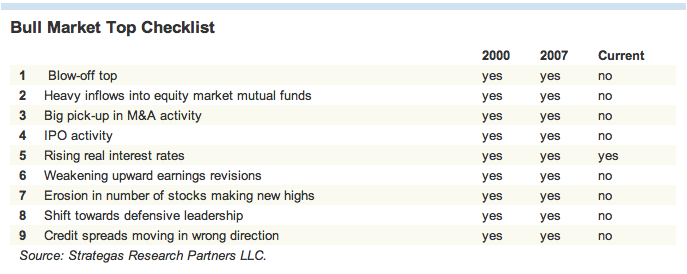
Let’s start with the matter of rising real interest rates Such rising rates (real or nominal) are typically a bear market culprit, but today it’s a little different. Yes, real interest rates are rising; but mostly due to low and still-falling inflation; not sharply rising nominal rates. And, real rates are rising from record-breaking earlier lows. As we’ve argued for much of the past year, there remains a lot of wiggle room for rates to move higher before they begin to bite either the economy or stock market in a significant way.
I am by no means dismissing the possibility of a market correction, especially around the beginning of Fed tapering. Historically, corrections associated with the beginning of a higher rate cycle have been generally in the 5-10% range; and it may not be different this time around. But a normal single-digit correction is something entirely different than the end of a bull market.
Fund flows frothy?
The list above also has mutual fund flow data, which many are now suggesting represents a glaring warning signal. Yes, equity fund flows have picked up sharply this year; but the total barely makes a dent in the hundreds of billions that has come out of equity funds since the financial crisis in 2008. Not only that, but traditional pension funds are under-exposed to equities; hedge funds’ net long exposure remains below 50% (a very defensive position); and foundations’/endowments’ public equity exposure has dropped precipitously over the past decade in favor of alternative asset classes (that in many cases are underperforming traditional equities). So there isn’t really any investing cohort that’s gone hog-wild in equities.
I will point out one item on the list above- shift towards defensive leadership. This is one that bears watching given the pickup in relative outperformance of more defensive sectors recently. At this stage, it likely just represents more short-term defensive positioning around the recent fiscal uncertainty and also some value-hunting into year-end. But if the momentum carries into 2014, it’s one on the list that may have to be checked.
…..read page 2 HERE

Uranium prices have been on a downward slide for half a decade now.
Trading around $35 per pound, uranium simply can’t stay this low for much longer.
Over the coming months and years, uranium prices will creep higher — and uranium companies sitting on currently undervalued deposits will offer investors tremendous upside.
Let me explain…
The Last Uranium Boom
The last uranium boom kicked off in 2005 as part of the “commodity supercycle.”
Its upward ascent ultimately peaked in June 2007 at around $140 pound. Oil would touch $145 a year later.

Commodities were already in an upward trend. But something special happened to uranium…
A new uranium mine called Cigar Lake was supposed to come online in 2007. It is the largest undeveloped high-grade uranium mine in the world.
However, Cigar Lake didn’t come online. Instead, it experienced a major flood.
With the world expecting this new source of uranium supply, prices started spiking quickly — all the way up to $138 per pound — before the popping of the housing bubble and the financial crash brought them back down. The incident at Fukushima helped keep them low.
Now things are starting to change…
Uranium demand is starting to creep back up. And with Cigar Lake still in a perpetual state of limbo, the world is starting to scramble for new supply.
The stage is set for a new uranium boom.
Why Uranium, Why Now?
At the very basic level, there simply isn’t enough supply to meet demand.
The world’s reactors will need 65,000 tonnes of uranium in 2013; but the world’s mines will only produce around 58,000 tonnes.
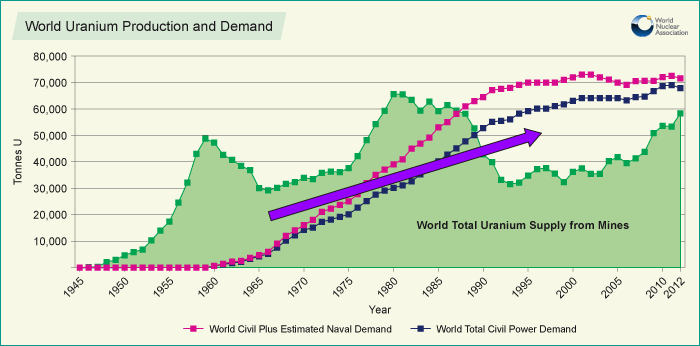
Some of the difference is made up with reprocessed fuel, but a supply crunch still looms for a litany of reasons.
For starters, global electricity demand is growing twice as fast as overall energy demand. Worldwide demand for electricity will rise 75% by 2035.
Nuclear is the cleanest (no emissions) and safest (per kWh generated) than any other fuel source. It will be the go-to source for the world to provide clean baseload energy.
Even Japan is not shying away, with Prime Minister Abe calling those who want to end nuclear power in Japan “irresponsible.”
There are nearly 70 reactors under construction worldwide, more than 160 planned, and 315 proposed…
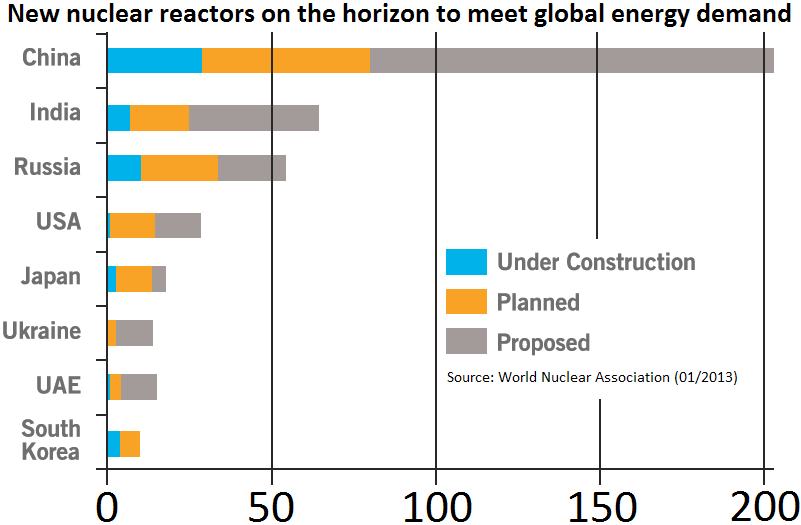
According to Rockstone Research:
A supply shortage is anticipated post-2013/2014: primary supply capacity must increase by around 90 million lbs. U3O8 in the next 6 years until 2020 only to meet demand requirements. During the last 8 years (2003-2011), global mine output solely increased by 48 million lbs…
For output to increase to meet rising future demand, uranium prices have to rise.
That’s why analyst forecasts for uranium prices in 2014 and 2015 are some 65% to 85% higher than they are today.
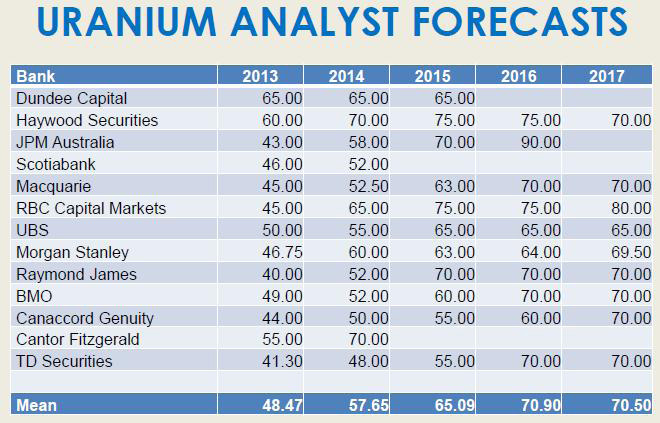
Lastly, some 20 million pounds of uranium per year have been coming to the United States from Russia for the past 20 years.
For reasons I lay out here, this agreement will soon come to an abrupt end, leaving a wide gap in U.S. uranium supply.
With uranium prices slated to rise some 85% in the coming two years, what’s the best way to play it?
Uranium Investing in 2014 and Beyond
Because uranium stocks typically rise 2x-4x the rate of the underlying uranium price, my money is on uranium stocks.
There’s a reason uranium miners like Cameco (NYSE: CCJ), Denison (AMEX: DNN), and Areva (PA: AREVA) are outperforming the market twice over (or more) since mid-October:
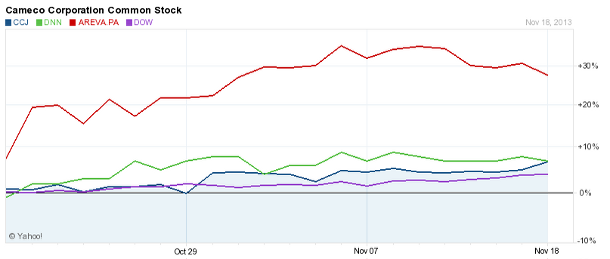
This is only a sign of things to come.
Increasingly, one region is being looked to as a large supplier of future uranium. Currently, the Athabasca Basin provides 16% of global uranium production. This is second only to Kazakhstan.
Over the next few years, though, Athabasca will be the fastest-growing area for uranium production in the word. Its output is expected to double by 2020.
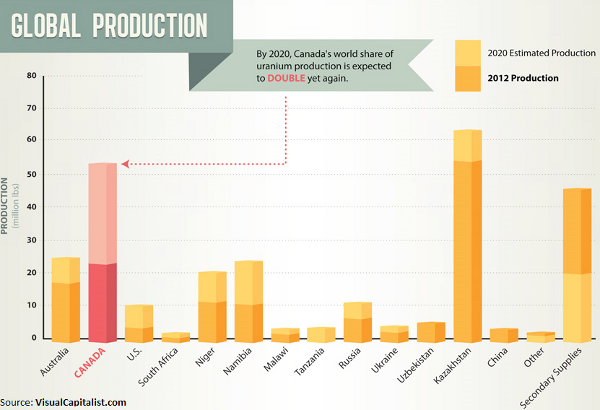
This is and will continue to happen for many reasons:
- Canada is the world’s friendliest mining country;
- Athabasca is utterly underexplored, with only the eastern portion in production;
- The mines there are young and growing, and will easily outpace growth in Kazakhstan; and
- The deposits are generally the shallowest and most high-grade in the world (10 of the 15 highest-grade deposits are in Athabasca)
For these reasons (and more, which I outline here), Athabasca is about to become the world’s uranium hotspot.
There’s already a land rush on…
A bidding war between Cameco and Rio Tinto (NYSE: RIO) for Hathor’s Roughrider deposit ended at $642 million in early 2012. Denison paid $71 million to Fission Energy for a portfolio of projects in the area earlier this year. It’s also made a $26 million offer to take out Rockgate Capital (TSX: RGT). Areva owns 37% of Cigar Lake, 30% of McArthur River, and the majority of the Midwest Mine.
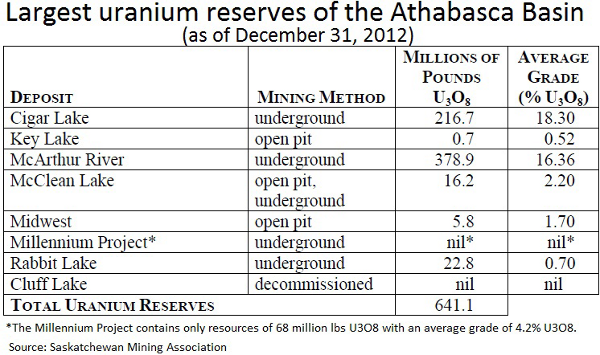
But it’s still extremely early…
This uranium grab is only getting started. The western and northern portions of the basin are only now being explored, and they look very impressive.
The tiny exploration companies that own them will grow by giant multiples as uranium price start their climb toward $70 per pound.
I have my eye on two of them specifically — and I went to visit them a few weeks ago, more than 2,500 miles from Baltimore.
So you can get ahead of the crowd on this one, I’ve put together a video detailing all the reasons for the coming uranium rush, my tour of the western Athabasca Basin, and why these two companies are poised for the highest gains.
Call it like you see it,

Nick Hodge
Nick is the Founder and President of the Outsider Club, and the Investment Director of the thousands-strong stock advisory, Early Advantage. Co-author of two best-selling investment books, including Energy Investing for Dummies, his insights have been shared on news programs and in magazines and newspapers around the world. For more on Nick, take a look at his editor’spage.
*Follow Outsider Club on Facebook and Twitter.


The US inflation numbers came in as expected this morning with year on year headline rate at 1.0%
and core to 1.7% despite a month on month decline in CPI of -0.1%.
The US Dollar index ti trading down 13pts this morning to 80.57, a new low for the last 9 days.
Drew Zimmerman
Investment & Commodities/Futures Advisor
604-664-2842 – Direct
604 664 2900 – Main
604 664 2666 – Fax
800 810 7022 – Toll Free


 @nickchodge on Twitter
@nickchodge on Twitter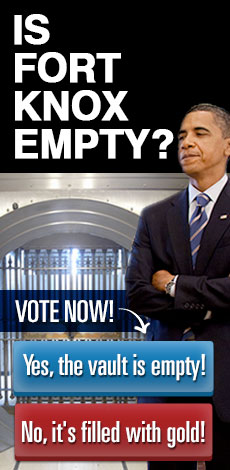 Dear concerned American,
Dear concerned American,









